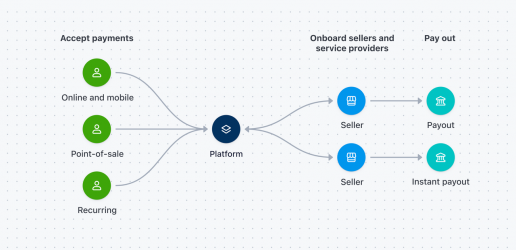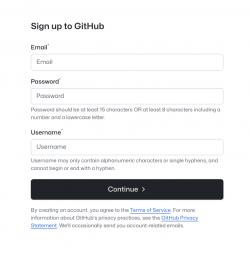- Joined
- 31.12.24
- Messages
- 16
- Reaction score
- 949

So you've got a stack of cards and no fucking clue what to do with them? Welcome to the club. Traditional carding is dying a slow death—online stores got wise to our tricks and now you're sitting there with plastic thats getting colder by the minute.

Listen closely: direct cashout methods are where it's at now. And Im about to drop a method most skids overlook completely: GitHub Sponsors. This platform moves millions in legitimate transactions daily, and security is surprisingly lax if you know what you're doing.
The Process
GitHub Sponsors was built for nerdy developers to get paid for their open-source work. What the suits at GitHub didnt anticipate was how perfect this system is for our purposes.

The setup is dead simple:
- Create two separate GitHub accounts—one receiver one sponsor
- Connect your receiver to a bank drop through their Sponsors program
- Use your sponsor account to dump payments from those hot cards
- Watch as GitHub passes 100% of the money straight to your receiver account.
Stripe Connect
Behind the scenes, GitHub runs on Stripe Connect for all their payment processing. This matters because GitHub doesn't handle a single transaction themselves—they've outsourced the entire financial pipeline to Stripe.

Your cards need to slide through Stripe Radar's detection system with minimal friction. Stripe Radar isn't some basic security theater—it's a sophisticated fraud detection engine analyzing hundreds of signals in real-time to determine if your transaction deserves to live or die.
What this means for your operation:
- Cards previously used on other Stripe merchants are compromised.
- Cards that triggered 3D Secure challenges are dead ends.
- Cards with existing fraud flags are worthless.
For this method to actually work, you need virgin cards with clean histories.
The Probation Period
The most critical part of this method is understanding GitHub's mandatory 60-day holding period for new Sponsors accounts. This is their first line of defense against exactly what were doing.

During these 60 days, the you've deposited so far is held under probation. This won't obviously work since cards typicall chargeback the first month. That's why for this approach to work, you need to deposit 5$ of your own money (via prepaid cards) to start the clock.
Start by feeding the system with small, legitimate $5 donations across multiple receiver accounts. As day 50-60 approaches thats when you bring out the heavy artillery—those premium cards with fat limits.
Your Shopping List

You need two completely separate antidetect profiles with different fingerprints and proxies. A solid bank drop or prepaid card with matching SSN and docs is essential. Fresh cards with fat limits that haven't touched Stripe will perform best. Grab residential US proxies that match your card states. And perhaps most importantly, you need patience.
Building Your Money Receiver
Your receiver account needs to look legit. Start with a professional domain email when signing up with Github—none of that gmail garbage.

Fill your profile with repositories containing actual code. If youre not a coder use AI to generate this. Create a commit history that looks like a real developer's work. Make sure your full profile matches your bank drops identity down to the last detail.

When applying for GitHub Sponsors, they'll want your full name on your drop date of birth, last four of SSN address matching your docs, and banking details.

Your Sponsor Persona
This account is completely separate from your receiver. Use a different device different proxy, different email and different identity. Dont waste time building an elaborate profile—this account just needs to hold up long enough to make payments. Make sure all card details match perfectly. International cards are better here since they take about a month to chargeback.

The Money Timeline

The process breaks down like this:
- Create your receiver accounts and apply for GitHub Sponsors program
- Once approved, use your own prepaid cards (or purchased ones that won't trigger chargebacks) to donate about $5 to each of your receivers
- This small donation starts the 60-day clock ticking on each account
- Near the 60th day—timing depends on how long you think your cards will last before chargebacks hit—unleash a barrage of larger donations
- When the holding period ends funds release to your bank drop
Scaling Up
One account might get you a quick payday but running multiple receiver accounts is how you build an empire.
If you're running 3-5 accounts space them out strategically. This way, instead of one big payday youve got steady cash rolling in every week or two.
During the 60-day waiting period, keep your accounts looking alive. Drop occasional commits comment on open-source projects, and act like a real dev who's just starting to get some love from sponsors.
As you approach the 60-day mark spread your high-limit cards across multiple receiver accounts. GitHubs fraud detection isn't built to connect multiple developer accounts when you've compartmentalized your OPSEC properly.
When the funds finally clear, move fast. Withdraw from all mature accounts within the same 24-hour window and funnel that cash straight into your laundering channels. d0ctrine out.
Last edited:
